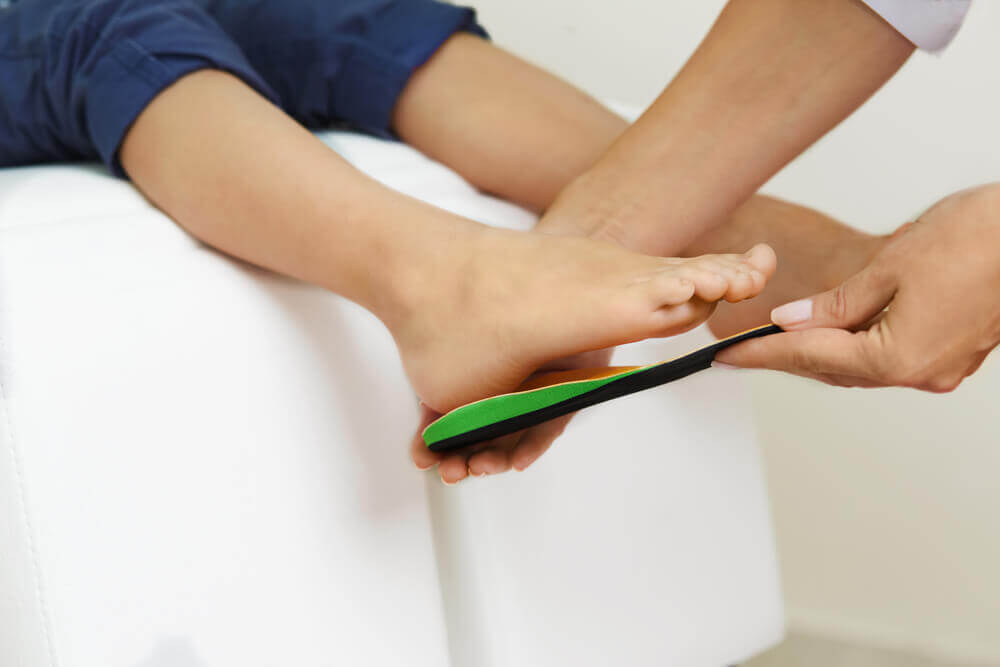- Identify What Works for You
Everyone has different feet, and suffering from plantar fasciitis is not as easy as choosing a “one-size fits all” insole. You might have noticed that there are lots of different kinds of insoles and orthotics for plantar fasciitis – high arch, low arch, mid-height arch, short arch, long arch, half insoles, full insoles, and others.
Based on the severity of your condition, you might have to choose an insert that accordingly suits your feet. You typically would want to avoid insoles that have too much arch support because it could easily cause other feet issues.
- Avoid Overly Flexible Insoles
It’s very important to choose a pair of insoles that are rigid and firm towards the heel and arch as it boosts stability and support. The last thing you want is for these arches to constantly move and collapse whenever you’re walking.
One exception for choosing soft and slightly flexible insoles is where the back of your footwear is rigid. In this case, it may probably be more comfortable to do so. Keep in mind that your shoes and insoles should always be flexible enough to allow for natural and free movement of all the toes.
- Consider Insoles with Heel Cups that can Absorb Shock
Some plantar fasciitis inserts and insoles have little support around the back heel, though some do. Choosing a pair with a great level of cushioning and support at the heel cup will help to help keep the pad squeezed together between the heels.
As a result, this helps to lower the impact of plantar fasciitis and helps with pain relief. However, despite how well-made the heel cup is, it won’t help to structure your joints and bones to be in better, more stable positions. As such, it won’t improve or fix the condition of plantar fasciitis.
- Get Footwear with Wide Toe Boxes
Wearing shoes with wide-toe boxes like Arcopedico comes with two major benefits. The first one is that if you decide to insert full-size insoles, you have to make sure that there’s enough space for them. But this wouldn’t be too much of a problem in case the insoles were designed to be trimmed.
The second, and perhaps more important benefit is that there should be ample room for the transverse arch to extend following each step. This is a lesser-known arch that essentially spans the entire width of the foot from side to side and requires enough space to move around.
Getting a small toe box requires that your feet – especially the toes – will be under more pressure and will be more restricted, which could lead to certain toe conditions like hammer toes and bunions.
- Match Insoles with the Shoes
Whether your buy half size or full-size pair of insoles, heel cups, or any other form of orthotics, it’s important that you fit the footwear you plan to wear properly. There has to be enough room because an insert will change the fitting of your footwear.
When you’re inserting insoles in your footwear, you have to remove the insoles that came with the footwear first and replace them with new ones. However, some footwear doesn’t allow you to remove the insoles, and if your feet don’t have enough room to move around once you insert your new plantar fasciitis insoles, you should just wear a different pair of orthotic footwear.
- Don’t Rely on Plantar Fasciitis Insoles
The only time you should rely on insoles or orthotics for your plantar fasciitis is when the feet are feeling weak or painful. Permanently relying on them could make your feet weaker as your feet won’t have to work nearly as hard as they would when wearing normal shoes without support.
You should be looking to support the arch for as long as necessary and not longer. As the pain subsides, you may start wearing fewer and less supportive orthotics or insoles, this also applies to supportive footwear.
- Effectiveness isn’t Based on Price
An expensive plantar fasciitis pair doesn’t make it any better compared to something that’s a quarter or even half of the price. This runs back to the earlier point of figuring out exactly what works for you. Be sure to also try out a number of different insoles types to see which one fits your feet best.
If you don’t have time to do this or you are just looking to buy them online, then you will have to make calculated decisions depending on the information provided by the seller and the different pictures of insoles at different angles.
